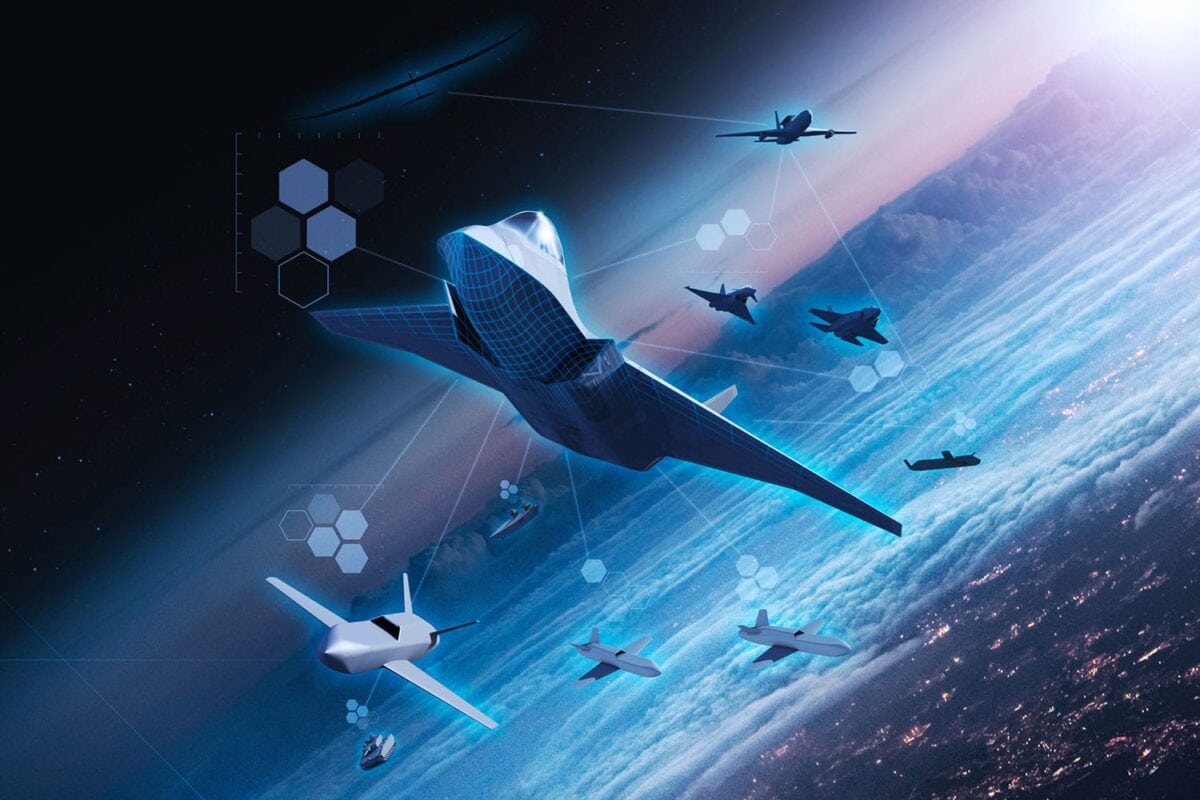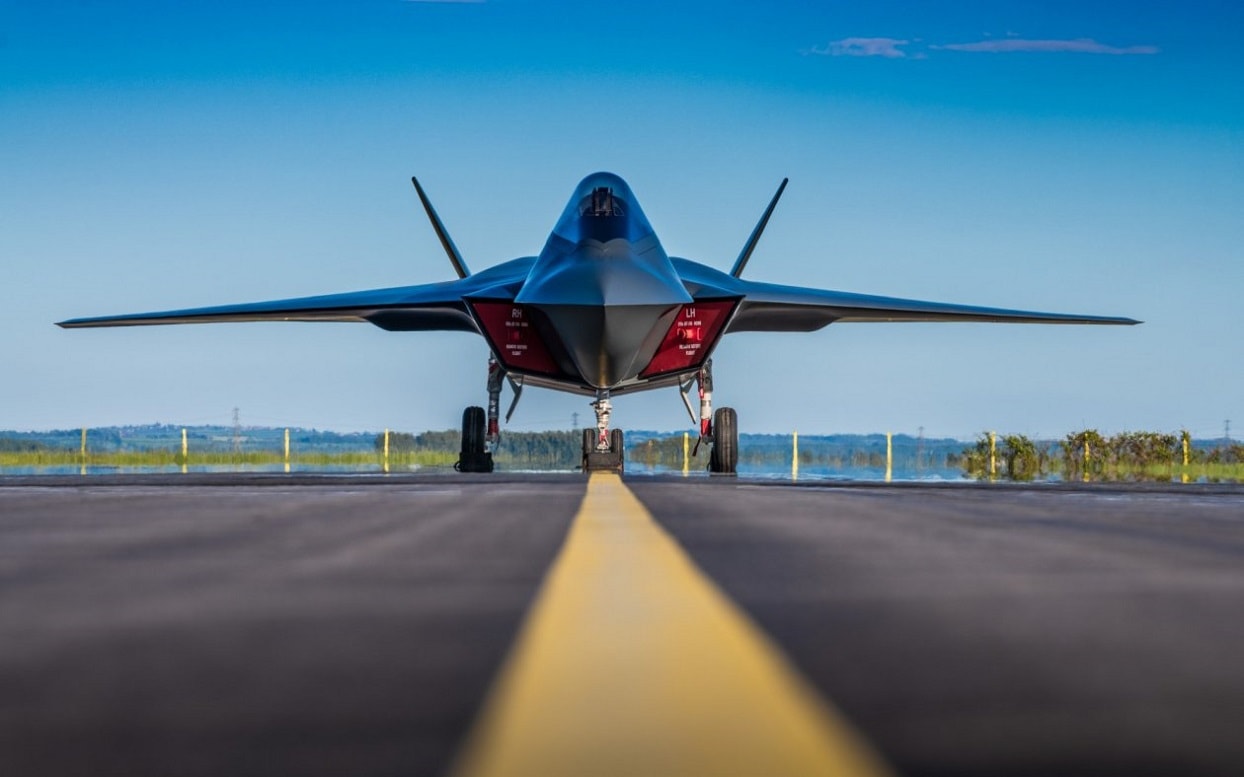Coming Soon: A UK-Japan 6th Generation Fighter? Three anonymous sources have informed Reuters that Britain and Japan are on the verge of closing a deal to merge their 6th generation fighter programs, respectively the Tempest and F-X program. The two countries hope to have a deal in place by the end of the year.
6th Generation Fighter Merger: What We Know
Japan has never partnered with anyone but the United States for a large military program; the merger would be the first collaboration between Japan and Britain. The collaboration would be significant, taking many years and costing tens of billions of dollars.
“The main thing that we are aiming for is to build a common jet that may have small differences in design for each country,” one source told Reuters.
Teaming up will allow the two countries to spread development costs between themselves, softening the individual financial blow. The finished product would be exported, too – with Britain handling the European market and Japan covering the Asian market. Exporting the new jet would “increase production lots and reduce the price per plane, helping both countries stretch their defence budgets,” Reuters reported.
Obviously, the collaboration represents the strengthening of ties between Britain and Japan – a timely diplomatic maneuver. The two nations, both primary US allies, are generally expanding their military presences. Britain, alongside the US, is “pivoting to Asia – or as Britain calls it, a “tilt” towards the Indo-Pacific. And Japan, amidst some controversy, is bolstering her military to counter a rising China.
Japan, whose constitution was amended just in 2014 to allow for offensive military operations, is rapidly expanding her military budget. In fact, Japan’s military budget is “expected to double over the coming decade as Prime Minister Fumio Kishida sticks with Abe’s national security agenda and fulfills an election pledge to “substantially” increase military outlays,” Reuters reported.
While the collaboration on a jet fighter would be Britain and Japan’s most significant joint venture, it would not be the first. In the past, the two island nations have worked on sensors, a deal to develop an engine demonstrator, and the JNAAM missile project. “You can see the direction of travel,” Douglas Barrie, a senior fellow at IISS, told Reuters.
6th Generation Fighter: Japan’s Plan
Japan’s F-X program, headed by Mitsubishi (who made the famed World War II fighter, the Zero), is estimated to cost $40 billion USD. The program is billed as a sixth-generation stealth fighter. The effort represents Japan’s first-ever stealth fighter; it will replace Mitsubishi’s F-2, which was developed in conjunction with USA’s General Dynamics and is essentially a shortened-wing version of the F-16 Fighting Falcon.
The F-X concept began percolating when the US banned export of the fifth-generation F-22 Raptor. Japan had hoped to buy the cutting edge Raptor, but US efforts to keep their newest tech safe from espionage forced Japan to consider a domestic solution. The F-X program has prioritized five development objectives: ability to provide air superiority; ability to adapt and incorporate next generation technologies; ability to modify and upgrade the platform; a program that bolstered Japan’s defense industry; affordable cost. The finished product is expected to feature two engines and be larger than the F-22. The large size inspired the nickname “Godzilla” and suggests the jet will have a long range and large payload.
6th Generation Fighter: The UK’s Plan
Britain’s Tempest project, led by BAE, is expected to replace the Eurofighter Typhoon. The Tempest is also designated as a sixth-generation aircraft. Development began in 2015. The program emphasizes building an aircraft “whose prime function is to conduct air-to-air and/or air-to-surface combat operations in a hostile and/or contested environment, whilst having the ability to concurrently conduct surveillance, reconnaissance, electronic warfare and command and control tasks.”
The Tempest is expected to incorporate several new technologies including deep learning AI, directed-energy weapons, hypersonic weapons, and the ability to fly unmanned. Indeed, the Tempest is a futuristic fighter; the jet is not expected to debut until 2035 or so.
BAE is not alone in developing the Tempest. Rolls-Royce is working on the jet’s power and propulsion; Leonardo S.p.A. is handling the sensors, electronics, and avionics; MBDA is working on weapons. So far, it remains unclear whether each company will join the venture between Britain and Japan.

Tempest. Image Credit: Industry handout.
Harrison Kass is the Senior Defense Editor at 19FortyFive. An attorney, pilot, guitarist, and minor pro hockey player, he joined the US Air Force as a Pilot Trainee but was medically discharged. Harrison holds a BA from Lake Forest College, a JD from the University of Oregon, and an MA from New York University. He lives in Oregon and listens to Dokken. Follow him on Twitter @harrison_kass.

